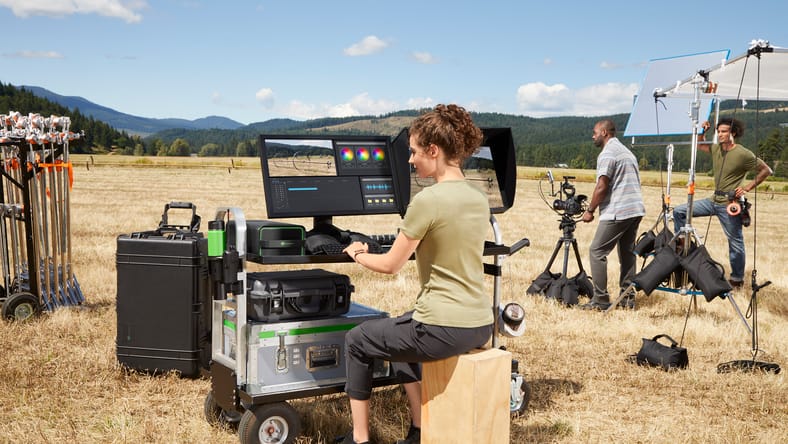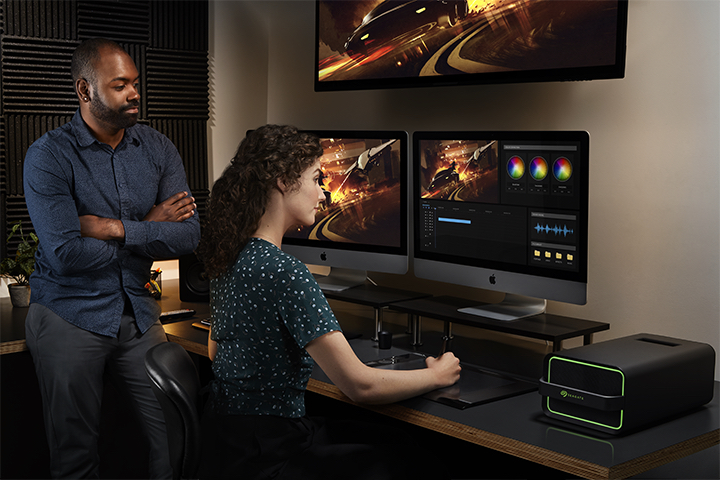
Moviemaking changed dramatically in the last two years as everyone had to embrace more remote work. For all the joys of open sets, packed edit suites, and drives to locations, it wasn’t always safe or practical to be in close quarters. So everyone had to innovate — and many of those innovations are here to stay.
The Entertainment Technology Center (ETC) at the University of Southern California, founded with the support of George Lucas in 1993, has been one proving ground for movie studios to test cutting-edge production ideas. One of its most ambitious and successful recent projects focused on remote production technology, and the daring new short film “The Ripple Effect,” was a product of that experimentation.
“The Ripple Effect” is set in the not-so-distant future, where Earth has become inhabitable. A coalition of nations has claimed the discovery of a new planet, Gaia, as the human race’s last hope for survival. Their arrival sets off a war against the planet’s original inhabitants. When the increasingly militaristic government demands the settlers’ sacrifice for the good of all, one family is torn when its eldest daughter, Ara, questions who is really at fault. “Ripple Effect” asks us if we’re brave enough to go against the grain, and at what cost.
All filming took place on site in Los Angeles County. Critical COVID measures were put into play to ensure safety through protocols and social distancing.
One challenge ETC set out to solve was how to back up footage in real time: the production team had a relatively low-bandwidth internet connection on set, which meant that streaming backups to the cloud was not feasible. In order to ensure the integrity of the footage, the producers backed up all their cameras using Lyve™ Mobile Arrays from Seagate. With the introduction of its Lyve mass capacity edge storage products, Seagate has developed a “new way to data,” aiming to reduce the cost, time to transfer data and complexity of storage by seamlessly moving massive amounts of data. At its peak, the project was generating about 12TB of data per day from Alexa LF large-format cameras. Three backups were created after every scene, with two files ultimately stored in the cloud and another kept on a portable drive.

Seagate Production Studio, courtesy of SEAGATE
Additionally, the team wanted to ensure their editing team could access all the footage and continue to think about the story instantaneously. The ability to move production footage into the cloud enabled access to that data — from anywhere.
The innovative use of cloud storage helped the project develop new ways to reduce post-production costs, by allowing for more editing and related work during production. “One of the things we wanted to facilitate as much as possible was ease of use. And I’m not aware of another company doing what Seagate is doing with Lyve Mobile Array storage for data in motion,” said Dane Brehm, Production Technologist at Cintegral.Tech.
You’ll be able to see the product of their innovation soon — the producers of “The Ripple Effect” plan to unveil it at film festivals this year.
Main image: A Seagate film set, courtesy of SEAGATE
Share:

